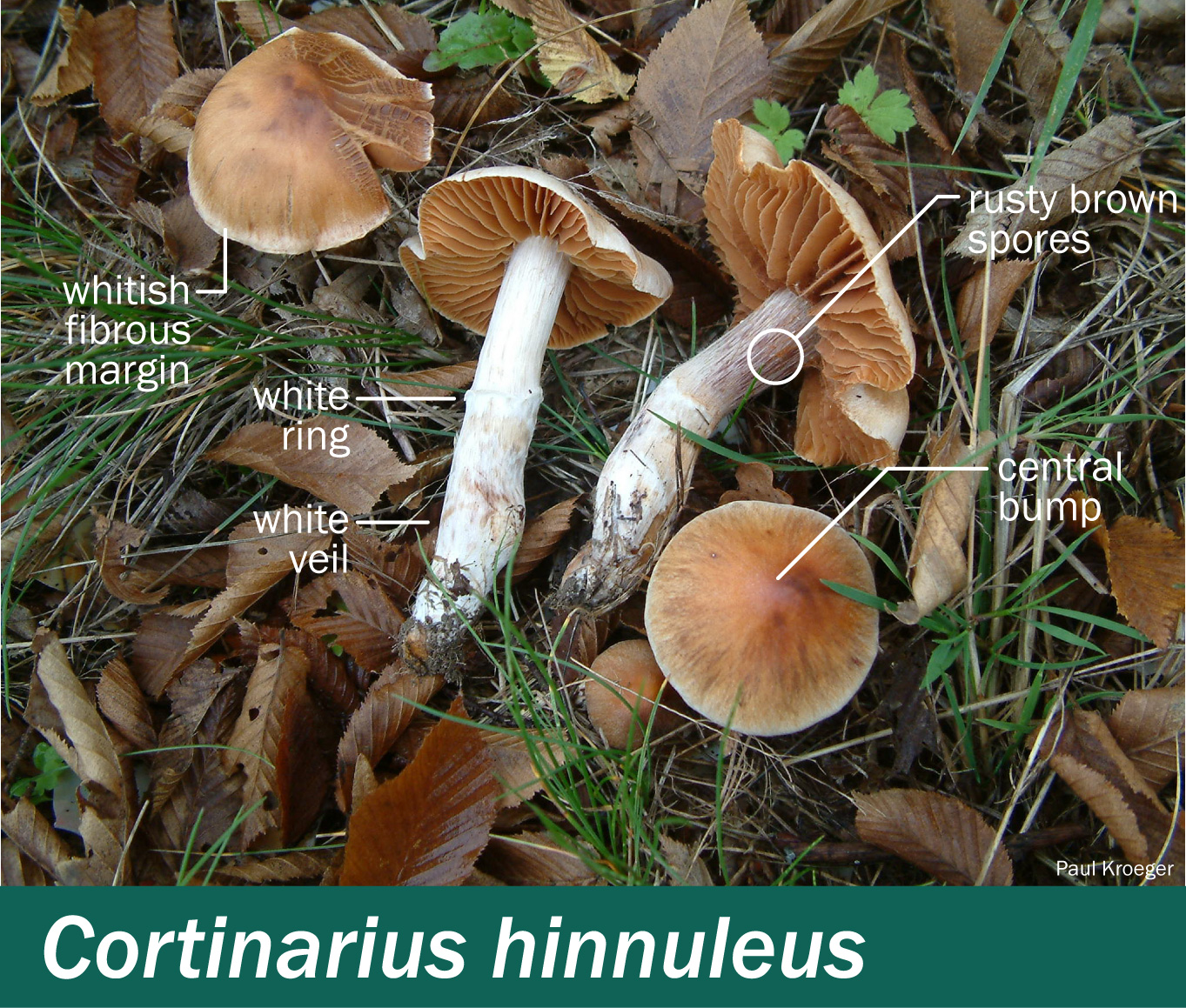Cortinarius hinnuleus — Earthy webcap
Odour: Earthly smell gives the species its common name.
Cap: 2–7 cm in diameter, conical with rounded top when young, later more flattened, but often with a central bump. The surface is orange-brown, with whitish, fibrous margin. It is dry and generally smooth.
Gills: Widely enough spaced so that you can see the sides of the gills from the bottom of the cap. Attached to the stem. The colour starts out as brownish yellow and becomes darker with age. Gill edges are paler than the sides.
Stem: 3–12 cm long x 0.5–1.2 cm wide, cylindrical or widening at base. Whitish remains of the veil cover the yellowish-brown surface. The stem base becomes darker brown with age.
Ring or veil: A spider web-like partial veil may remain on the upper stem. Abundant remains of the universal veil form a layer of whitish fibrils that clothe the cap margin and the lower part of the stem. As in several other webcap species, the universal veil, rather than the partial veil forms the whitish ring around the stem.
Cup: No cup.
Spores: 7–9 x 5–7 µm, brown, with a warted surface.
Habitat: On the ground, in small groups, or solitary, associated with hornbeam (Carpinus), birch (Betula) oak (Quercus) and other broad-leaved species in urban parks and along street boulevards; ectomycorrhizal.
Geographic distribution: This is a north temperate species reported from North America and Europe.
Symptoms: Although not yet documented from the Pacific northwest or BC, Cortinarius orellanosus caused kidney failure in a patient in Michigan5. Eating other webcaps has occasionally been implicated in minor gastrointestinal upsets6.
Treatment: Contact your regional Poison Control Centre if you or someone you know is ill after eating any of the webcaps. Poison centres provide free, expert medical advice 24 hours a day, seven days a week. If possible, save the mushrooms or some of the leftover food containing the mushrooms to help confirm identification.
Poison Control:
British Columbia: 604-682-5050 or 1-800-567-8911.
United States (WA, OR, ID): 1-800-222-1222.

